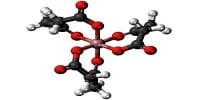Inert gas
The zero group consists of six elements: Helium (2He), Neon (1oNe), Argon (18Ar), Krypton (36Kr), Xenon (54Xe) and Radon (86Rn).
They are all inactive and chemically inert substance, and are gaseous at ordinary temperature. These gases are known as inert or inactive gas.
The arguments for positioning of inert gases in the Group-0 in the periodic table are given below:
- Electronic configuration of outermost layer: The outermost layer of all inert gas atoms are saturated with electron.
He (2) –> 1s2
Ne (10) –> 1s2 2s2 2p6
Ar (18) –> 1s2 2s2 2p6 3s2 3p6
Kr (36) –> 1s2 252 2p6 3s2 3p6 3d10 4s2 4s6
Xe (54) –> 1s2 2s2 2p5 3s2 3p6 3d10 452 456 4C10 5s2 5p6
Rn (86) –> 152 2s2 2p6 3s2 3p6 3d10 4s2 4s6 4d10 4f14 5s2 5p6 5d10 652 6p6
Helium alone has duplet configuration in the outermost layer. Others have complete octate. Due to saturation of electrons in the outermost layers, they do not react with other elements by exchanging or sharing of electrons. That’s why they are chemically inert. As they can’t form compounds, their valency is zero. That’s why they have been placed in 0-group.
- The position of inert gases in terms of their properties: The left most group of the periodic table is the most electro positive and most electro negative group lies in the 7th group. So it is assume such type of neutral elements should be placed in between most electropositive and most electronegative elements. That’s why inert gases are placed in zero g roup.
- Order of oxidation number: We know that the oxidation number of Group — IA element is ‘+1’ and that of 7th group is ‘-1’. So inert gases are placed in the group — 0 , between these two groups (grp — IA and 7th group), such that the oxidation state of that group becomes zero.
- The order of valency: The valency of element increases from 1 to 4 and then from 4 to 1 as we go from left to right across a period. If we follow the continuity, a zero — valency group appears at the right — most columns.
The inertness of noble gases:
From the above electronic configuration of Neon and Krypton we see that they both have eight electrons in their outermost shell. Except helium all other inert gases contains complete octet. That is all of them have complete saturated outermost layer. So, high ionization energy is required to remove or add electron from valence shell. Such ionization energy is not obtained in chemical reactions. This is the reason why they are chemically inert.













